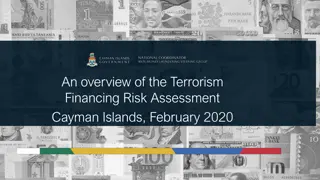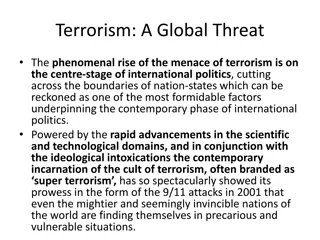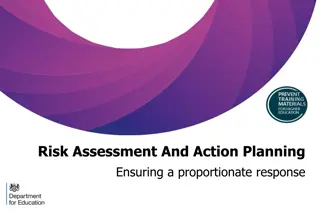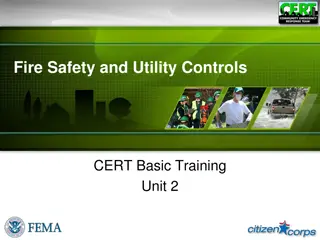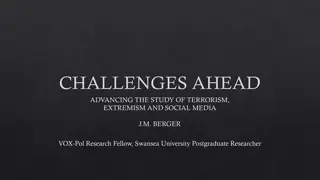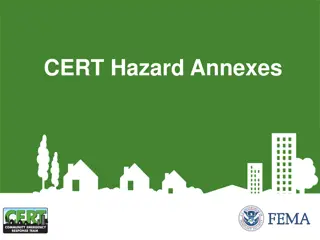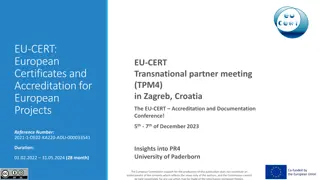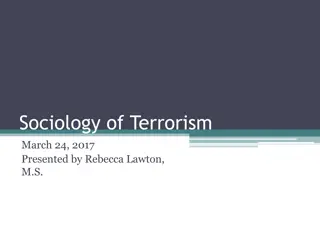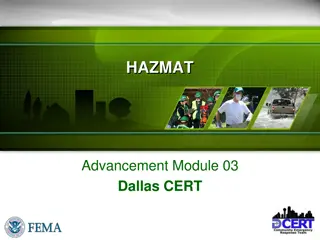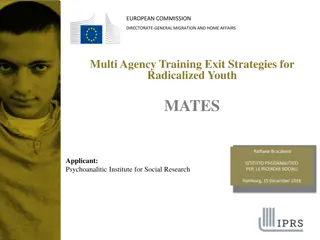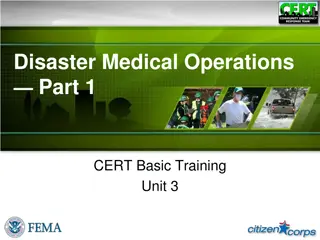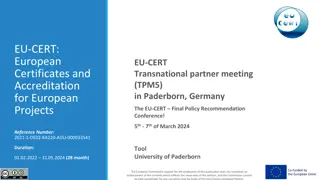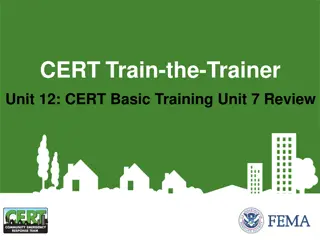Terrorism and CERT
Febrile seizures, common in children aged 0-5, are usually harmless and not associated with long-term health issues. Learn about their causes, signs, and how to manage fever in children. Remember to monitor temperatures and seek medical attention for high fevers.
Download Presentation

Please find below an Image/Link to download the presentation.
The content on the website is provided AS IS for your information and personal use only. It may not be sold, licensed, or shared on other websites without obtaining consent from the author.If you encounter any issues during the download, it is possible that the publisher has removed the file from their server.
You are allowed to download the files provided on this website for personal or commercial use, subject to the condition that they are used lawfully. All files are the property of their respective owners.
The content on the website is provided AS IS for your information and personal use only. It may not be sold, licensed, or shared on other websites without obtaining consent from the author.
E N D
Presentation Transcript
Terrorism and CERT CERT Basic Training Unit 8
Unit Objectives Define terrorism Identify potential targets in the community Identify the eight signs of terrorism Identify CERT operating procedures for a terrorist incident Describe the actions to take following a suspected terrorist incident CERT Basic Training Unit 8: Terrorism and CERT 8-1
Unit Topics What Is Terrorism? Terrorist Targets Terrorist Weapons CBRNE Indicators Preparing at Home, Work, and in Your Neighborhood CERTs and Terrorist Incidents CERT Basic Training Unit 8: Terrorism and CERT 8-2
What Is Terrorism? The unlawful use of force or violence against persons or property to intimidate or coerce a government, the civilian population, or any segment thereof, in furtherance of political or social objectives CERT Basic Training Unit 8: Terrorism and CERT 8-3
Terrorism in the Past CERT Basic Training Unit 8: Terrorism and CERT 8-4
Terrorist Goals Mass casualties Loss of critical resources Disruption of vital services Disruption of the economy Heightened fear CERT Basic Training Unit 8: Terrorism and CERT 8-5
Terrorist Targets Seats of government Key industries Bridges, subways, tunnels, and other key transportation facilities Water supplies and utilities CERT Basic Training Unit 8: Terrorism and CERT 8-6
Terrorist Weapons 1. Chemical 2. Biological 3. Radiological 4. Nuclear 5. High-yield Explosives CERT Basic Training Unit 8: Terrorism and CERT 8-7
Chemical Weapons 1. Blister agents 2. Blood agents 3. Choking agents 4. Nerve agents 5. Riot-control agents CERT Basic Training Unit 8: Terrorism and CERT 8-8
Biological Weapons Routes of exposure: Inhalation Ingestion Absorption CERT Basic Training Unit 8: Terrorism and CERT 8-9
Radiological Weapons Considered a higher threat because components are easy to obtain CERT Basic Training Unit 8: Terrorism and CERT 8-10
Nuclear Weapons Derives destructive force from nuclear reaction Affected area is larger as contaminated objects spread Potential for casualties extends beyond initial attack Long-term effects difficult to monitor and track CERT Basic Training Unit 8: Terrorism and CERT 8-11
High-Yield Explosives Weapon of choice for terrorists Used in 80% of attacks Military munitions: grenades, mortars, surface-to-air missiles Newer explosives called improvised explosive devices or IEDs Any device created in an improvised manner used to destroy, disfigure, distract, or harass CERT Basic Training Unit 8: Terrorism and CERT 8-12
Assessing the Risk Types of terrorist weapons in order of greatest risk (least to greatest): Nuclear Chemical Radiological Biological High-yield explosives CERT Basic Training Unit 8: Terrorism and CERT 8-13
Eight Signs of Terrorism 1. Surveillance 2. Elicitation 3. Tests of security 4. Funding 5. Acquiring supplies 6. Impersonation or suspicious people 7. Rehearsals and dry runs 8. Deployment CERT Basic Training Unit 8: Terrorism and CERT 8-14
Attack Has Occurred or Is Underway Vapor clouds or mists Unscheduled spraying Materials or equipment unusual for the area Unusual odors or tastes Out of place and unattended packages Leaking packages CERT Basic Training Unit 8: Terrorism and CERT 8-15
See CBRNE Indicators? If you observe any indications of a terrorist incident you should: Not touch it Move away from object or area Report it to authorities immediately CERT Basic Training Unit 8: Terrorism and CERT 8-16
Physical Signs of Chemical-Biological Attack Sick or dead animals, fish, or birds Large number of persons seeking medical attention Multiple survivors exhibiting similar symptoms Multiple casualties without obvious signs of trauma CERT Basic Training Unit 8: Terrorism and CERT 8-17
Preparing at Home, Work, Neighborhood Personal and family safety is first priority! CERT members are NOT equipped or trained to respond to terrorist incidents Terrorism incident scenes are also crime scenes CERT Basic Training Unit 8: Terrorism and CERT 8-18
Prepare for Terrorist Activity CBRNE events are survivable Preparing for terrorist incidents similar to preparing for natural hazards Review Unit 1 guidelines Certain actions more relevant to CBRNE CERT Basic Training Unit 8: Terrorism and CERT 8-19
Shelter-in-Place Procedures Shut off ventilation systems Go to your shelter-in-place room Use precut plastic sheeting to cover air openings Tape sheeting over doors, windows, vents Use duct tape to seal other areas Listen to a battery-powered radio Ventilate room once contaminants are gone CERT Basic Training Unit 8: Terrorism and CERT 8-20
Protection from Radioactive Fallout Go deep inside a building (distance/shielding) Stay inside (time) Stay tuned CERT Basic Training Unit 8: Terrorism and CERT 8-21
Basic Decontamination Procedures Leave the contaminated area Take decontamination action Remove everything Wash hands Flush the entire body Blot dry Report for decontamination Food safety CERT Basic Training Unit 8: Terrorism and CERT 8-22
Treating Others First priority for a CERT member is personal safety Take self-protective measures only Do not attempt to treat survivors in contaminated area Tell survivors about decontamination procedures CERT Basic Training Unit 8: Terrorism and CERT 8-23
What Professional Responders Will Do Follow sizeup steps: What is going on How bad the situation is and how much worse it could get What measures can be taken to control the incident safely What resources will be needed CERT Basic Training Unit 8: Terrorism and CERT 8-24
Unit Summary Terrorists attack to: Intimidate the government or the civilian population Further their objectives Their goals are to: Create mass casualties Disrupt critical resources, vital services, and the economy Cause fear CERT Basic Training Unit 8: Terrorism and CERT 8-25
Unit Summary (contd) Terrorist Weapons 1. Chemical 2. Biological 3. Radiological 4. Nuclear 5. High-yield Explosives CERT Basic Training Unit 8: Terrorism and CERT 8-26
Unit Summary (contd) CERT Protocol for Terrorist Incidents Terrorist incidents are a stop sign! Do not proceed if you suspect terrorist activity Simple guidelines: Do not touch Move away from object or area Report it to authorities immediately CERT Basic Training Unit 8: Terrorism and CERT 8-27
Homework Assignment Review the materials from the previous units Wear appropriate clothing for disaster simulation exercise CERT Basic Training Unit 8: Terrorism and CERT 8-28



